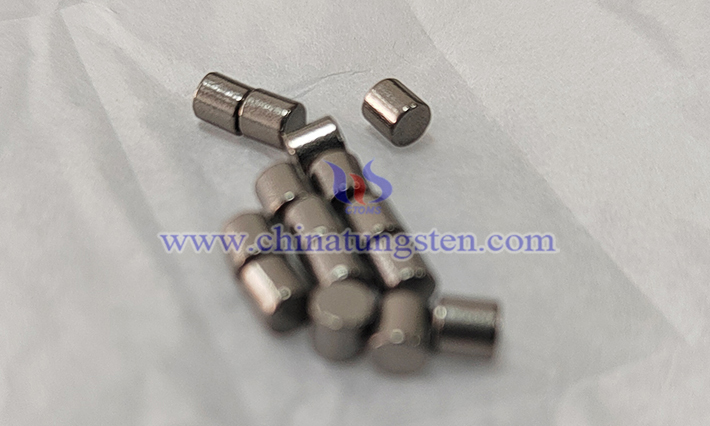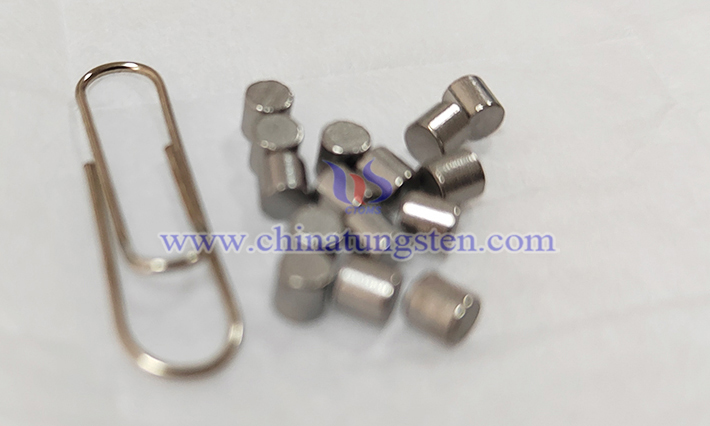How to Avoid Surface Contamination of Barium Tungsten Electrode?
- Details
- Category: Tungsten Information
- Published on Wednesday, 04 June 2025 17:33
- Written by Zhenghua
- Hits: 7
Surface contamination control of barium tungsten electrode requires comprehensive management from multiple dimensions such as material design, process optimization, environmental management, operating specifications, and use conditions. By accurately controlling the barium tungsten ratio, optimizing the preparation process, maintaining a high vacuum/inert environment, strictly following operating specifications, and reasonably selecting electrical parameters, the electrode's anti-pollution ability and service life can be significantly improved.

I. Influence of Material Properties and Preparation Process
1. Control of Barium Tungsten Ratio
Barium Content: An appropriate amount of barium can reduce the work function and improve the electron emission efficiency, but an excessive amount will lead to uneven surface distribution and accelerate oxidation or volatilization (such as barium easily reacts with oxygen at high temperature to form BaO).
Tungsten Matrix: High-purity tungsten powder forms a porous skeleton through powder metallurgy technology, and the porosity must be uniform and connected to avoid contaminant deposition and blockage.
2. Preparation Process Control
Sintering Temperature: Appropriate high temperature sintering forms a stable tungsten skeleton. Temperature deviation may lead to uneven grain size or internal defects.
Impregnation Solution Composition: The concentration (5-20 wt%) of barium nitrate (Ba(NO₃)₂) or barium aluminate (Ba₃Al₂O₆) needs to be optimized to avoid crystallization and clogging of pores after impregnation.
Atmosphere Control: The decomposition and sintering stages need to be carried out in an inert (such as argon) or reducing atmosphere (such as hydrogen) to prevent barium oxidation.
3. Surface Treatment Process
Polishing and Cleaning: Remove processing residues (such as paraffin, grease) to avoid local contamination.
Activation Treatment: Heat to the working temperature in a vacuum or inert atmosphere to promote barium migration to the surface, form an active emission layer, and enhance anti-pollution ability.
II. The Key Role of Working Environment and Storage Conditions
1. Vacuum Requirements
Maintain a high vacuum to reduce gas molecule adsorption and pollutant deposition. If the vacuum is insufficient, water vapor, oxygen, etc. will accelerate electrode oxidation.
2. Inert Gas Protection
Stored in dry nitrogen or argon, it can effectively isolate water vapor and oxygen and prevent the formation of surface oxide film.
3. Temperature Control
Working Temperature: needs to be controlled within the optimal range. High temperature will accelerate the volatilization of barium, and low temperature may cause condensation pollution.
Heating Rate: After moisture absorption, the temperature needs to be raised slowly to avoid thermal stress causing surface cracking.
4. Gas Composition Restriction
Avoid contact with active gases (such as oxygen and hydrocarbons) to prevent surface reactions from generating insulating layers (such as BaCO₃).

III. Operation Specifications and Human Intervention
1. Exposure Time Limit
The electrode must be exposed to the atmosphere for ≤48 hours, otherwise moisture absorption will cause spots on the surface during heating (such as WO₃ deposition).
2. Clean Operating Environment
Operation must be carried out in a clean room to avoid oil or dust contamination on the fingers (oil contamination will reduce activation efficiency).
3. Mechanical Protection
The electrode is brittle and needs to be handled with care to prevent cracking or damage (damaged areas are prone to become pollution sources).
IV. Optimization of Use Conditions and Electrical Parameters
1. Working Temperature Control
The emission current is large but the life is short at high temperature, while the life is long but the emission efficiency is low at low temperature, which requires a balance.
2. Current Density and Pulse Width
Too high current density will cause arc ablation, and too long pulse width will aggravate sputtering pollution (such as tungsten particle shedding).
3. Working Frequency and Duty Cycle
The duty cycle needs to be optimized for high-frequency use to avoid frequent thermal cycles causing material fatigue.
V. Pollutant Characteristics and Interaction Mechanisms
1. Pollutant Type
Oxide (such as BaO, WO₃): Poor conductivity will reduce emission efficiency.
Carbide (such as BaC₂): May form an insulating layer to hinder electron escape.
Sulfide: Easy to generate in complex atmospheres, causing electrode "poisoning".
2. Pollutant Source
Residual solvents (such as ethanol), grease or environmental dust need to be eliminated through process optimization (such as multiple impregnation-sintering) and clean control (such as HEPA filtration).
3. Surface Interaction
The chemical reaction (such as oxidation) or physical adsorption of pollutants on the electrode surface will change the surface energy level structure and affect the electron emission performance.
VI. Control of Manufacturing Process and Post-Processing Links
1. Key Process Steps
Cleaning: Use deionized water or organic solvents (such as ethanol) to remove impurities.
Baking: High-temperature baking in a vacuum or inert atmosphere to remove adsorbed gases.
Activation: Activate the salt through high-temperature diffusion to form a stable emission layer.
2. Storage and Transportation
Humidity, temperature and cleanliness must be controlled to avoid surface oxidation or mechanical damage.
3. Waste Disposal
Barium compounds are toxic and need to be handled according to environmental protection standards to prevent environmental pollution.
- Chinatungsten Online: www.tungsten.com.cn
- CTIA GROUP LTD: en.ctia.group
- Tungsten News & Price: www.ctia.com.cn
- Molybdenum News & Price: news.molybdenum.com.cn
- Tel.: 86 592 5129696; Email: sales@chinatungsten.com





 sales@chinatungsten.com
sales@chinatungsten.com